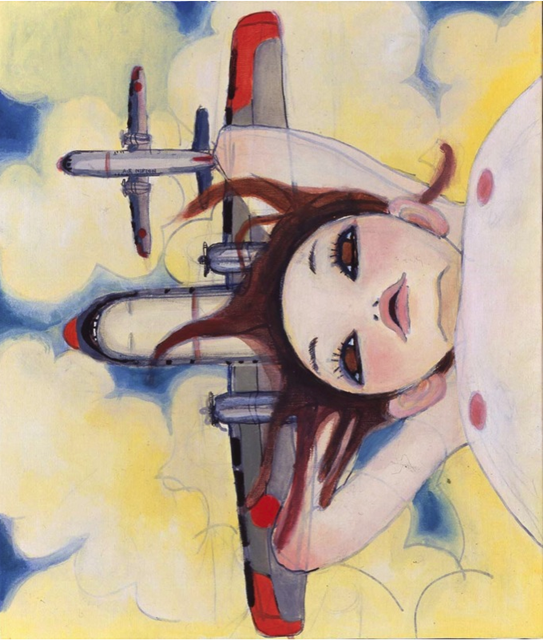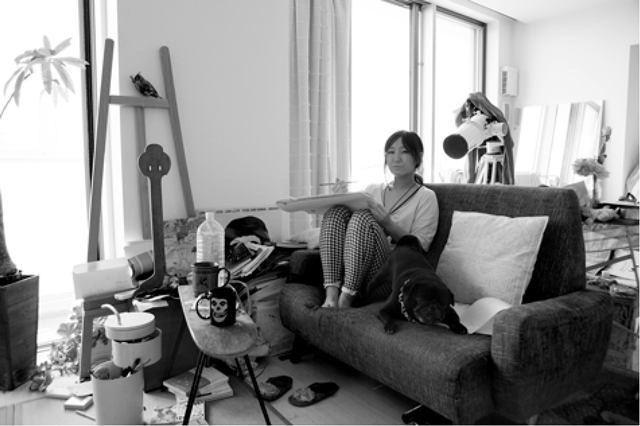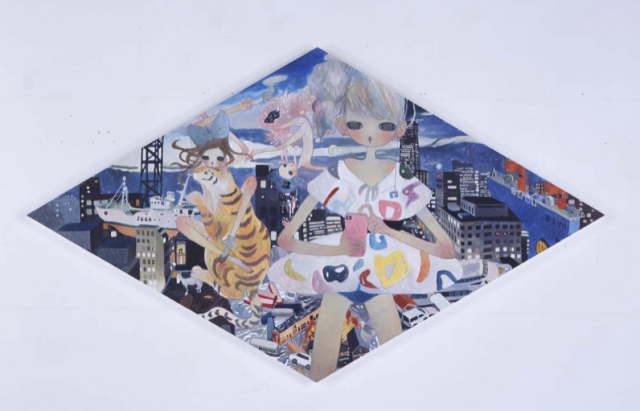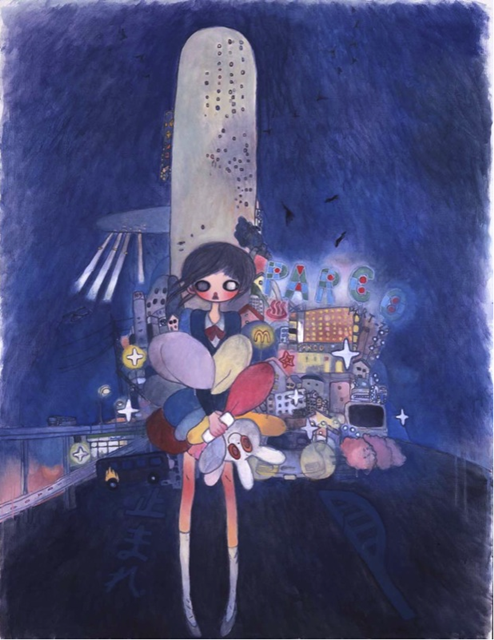Galleries
artnet Asks: Superflat Artist Aya Takano
Takano is at the cutting edge of Japanese contemporary art.

Takano is at the cutting edge of Japanese contemporary art.


Aya Takano
Photo by Guillaume Ziccarelli. Courtesy of Galerie Perrotin.
©2011 Aya Takano/Kaikai Kiki Co., Ltd. All Rights Reserved.
Born in Saitama, Japanese Superflat artist Aya Takano grew up reading science fiction in her father’s library and fantasizing about the ability of flight. Still inspired by the supernatural, flight, and exotic animals, Takano’s canvases take influence from Japanese traditions of ukiyo-e (Edo period woodblock prints of popular Japanese culture) and Shunga (erotic depictions, typically in woodblock-print format) to depict wide-eyed, noseless female characters interacting in futuristic scenes and discovering sexuality, both homo and hetero. Soon after graduating from Tama Art University in Tokyo in 2000, Takano became an assistant to Takashi Murakami, who would become her mentor and invite her to become a member of his art production company, Kaikai Kiki Ltd. Takano has exhibited alongside Murakami and in solo exhibitions internationally, and regularly writes science fiction.
When did you know you wanted to be an artist?
By the time I was maybe two or three years old, I already wanted to be an artist. Nothing has changed since then.

Aya Takano, Present (2011)
Acrylic on canvas, 59.1 x 102.4 in.
Photo courtesy of the artist and Galerie Perrotin.
© 2011 Aya Takano/Kaikai Kiki Co., Ltd. All Rights Reserved.
What inspires you?
All that I experience. Lately I have come to believe that good and bad are simply the products of human outlook, and everything that happens is incredibly important. Even so, I still try to place emphasis on the things I believe are right (for example: maintaining a feeling of love for all).

Aya Takano, Hoshiko the City Child (2006)
Acrylic on canvas 57.5 x 44.1 x 1.2 in.
Photo courtesy of the artist and Galerie Perrotin.
© 2011 Aya Takano/Kaikai Kiki Co., Ltd. All Rights Reserved.
If you could own any work of modern or contemporary art, what would it be?
Gauguin’s Do’où venons-nous? Que sommes-nous? Où allons-nous? (Where do we come from? What are we? Where are we going?) (1897–1898). I think it is a masterpiece that asks the ultimate questions of not only the human race but all things in existence.

Aya Takano, Fallin’- Manma Air (2000)
Acrylic on canvas 20.9 x 17.9 in.
Photo courtesy of the artist and Galerie Perrotin.
© 2011 Aya Takano/Kaikai Kiki Co., Ltd. All Rights Reserved.
What are you working on at the moment?
I’m creating new works for an art fair in Shanghai and thinking of themes for a show I will do in Korea next year. Things were incredibly difficult for a time, but I am now enjoying myself very much.
When not making art, what do you like to do?
I believe that everything in my life is done to support my artwork, no matter what it is. That includes walking my dog, practicing Japanese dance, studying physics, playing shamisen, learning reggae dance, having a drink, reading books and manga, meditating, making conversation, giving water to frogs and bread to birds, or riding on my bike.